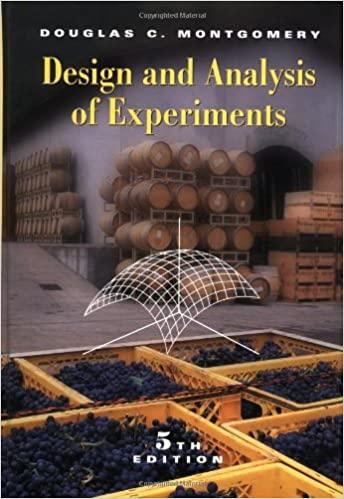A chemical engineer wishes to fit a calibration curve for a new procedure used to measure the
Question:
A chemical engineer wishes to fit a calibration curve for a new procedure used to measure the concentration of a particular ingredient in a product manufactured in his facility. Twelve samples can be prepared, having known concentration. The engineer wants to build a model for the measured concentrations. He suspects that a linear calibration curve will be adequate to model the measured concentration as a function of the known concentrations; that is, y = β0 + β1x + ∈, where x is the actual concentration. Four experimental designs are under consideration. Design 1 consists of six runs at known concentration 1 and six runs at known concentration 10. Design 2 consists of four runs at concentrations 1, 5.5, and 10. Design 3 consists of three runs at concentration 1, 4, 7, and 10. Finally, design 4 consists of three runs at concentrations 1, and 10 and six runs at concentration 5.5.
(a) Plot the scaled variance of prediction for all four designs on the same graph over the concentration range 1 ≤ x ≤ 10. Which design would be preferable?
(b) For each design calculate the determinant of (X' X)-1. Which design would be preferred according to the D-criterion?
(c) Calculate the D-efficiency of each design relative to the "best" design that you found in part (b).
(d) For each design, calculate the average variance of prediction over the set of points given by x = 1. 1.5, 2, 2.5 …, 10. Which design would you prefer according to the V-criterion?
(e) Calculate the V-efficiency of each design relative to the best design that you found in part (d).
(f) What is the G-efficiency of each design?
Step by Step Answer:






